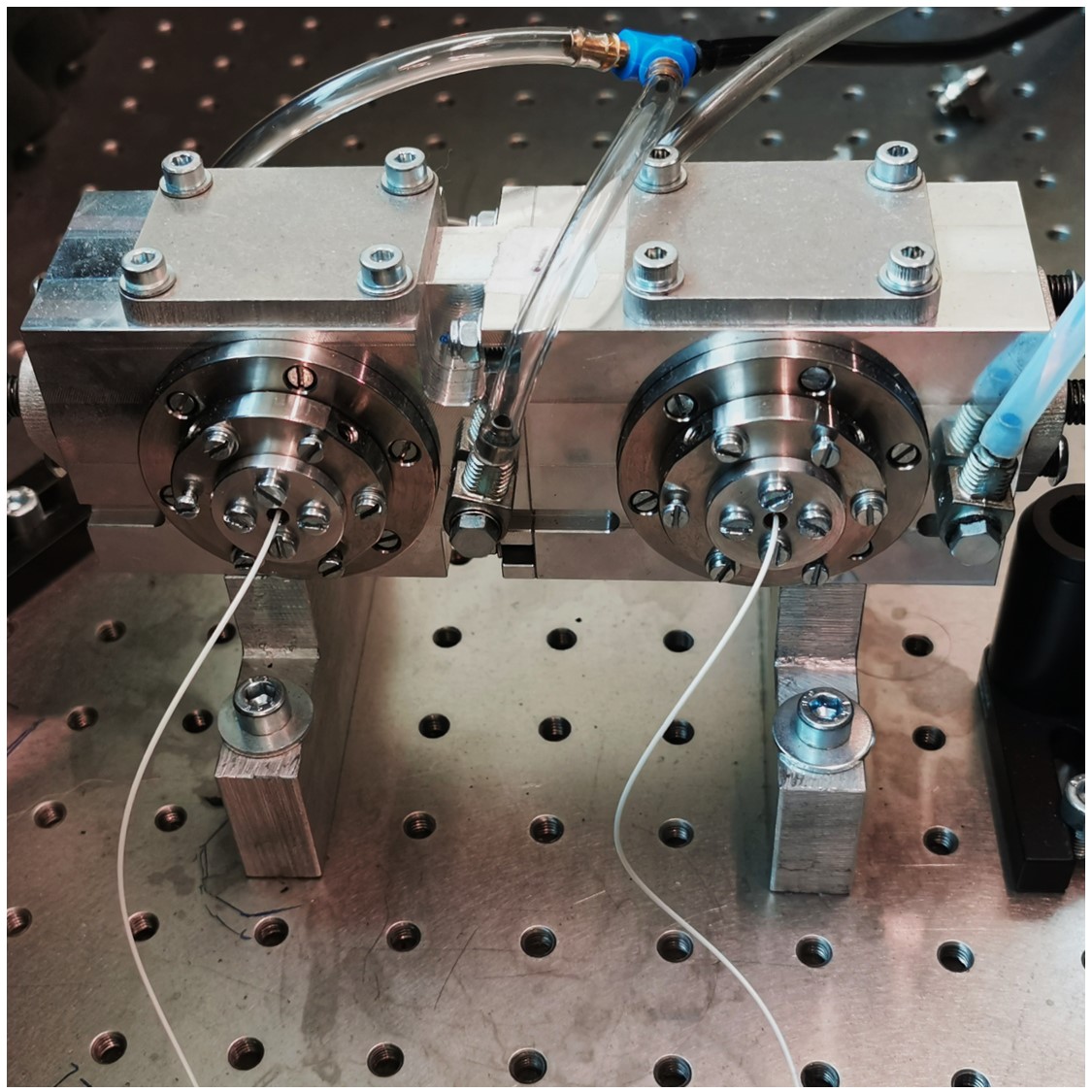Measurement of soot particles with photothermal interferometry
The FHNW Institute for Sensors and Electronics is working on a new measurement method for detecting atmospheric soot particles.
Starting situation
Atmospheric soot particles are mainly created by burning biomass and diesel fuel. Soot particles are known for their negative effect on our health. They also influence our climate because they absorb sunlight and thus heat up the atmosphere.
Result
Our approach consists of measuring and examining the soot particles using so-called photothermal interferometry (PTI). In this process, soot particles are detected because of their very pronounced light absorption. The main difference to today's standard measurement methods is that the PTI method is very sensitive and hardly affected by measurement artefacts, as the measurement takes place in situ.
Initially, we used photothermal interferometers with free-space lasers. Currently, we are working on miniaturizing and simplifying the method by using optical fibers and photonic integrated circuits (PIC).
Our latest publication shows the proof-of-concept of such a miniaturized interferometer, which is characterized, among other things, by the fact that it can be operated "passively": The 3x3 couplers used as beam-combining optics make it possible to operate the system without quadrature control.
The design has the potential to be further miniaturized, as a future interferometer can be built on a centimeter-sized chip, which will further improve the current detection limit.
References and documentation
The development of our free-beam interferometer: https://doi.org/10.5194/amt-13-7097-2020
Our waveguide-based interferometer: https://doi.org/10.1364/ao.476868, https://doi.org/10.5281/zenodo.10077921
Project information
Execution | |
Duration | 3 years |
Funding | Swiss National Science Foundation, EMPIR, Eurostars, Innosuisse, H2020 |
Team | Prof. Dr. Ernest Weingartner (Lead), Dr. Gregor Jundt, Jonas Bilal, Tobias Rüggeberg, Peter Steigmeier |

